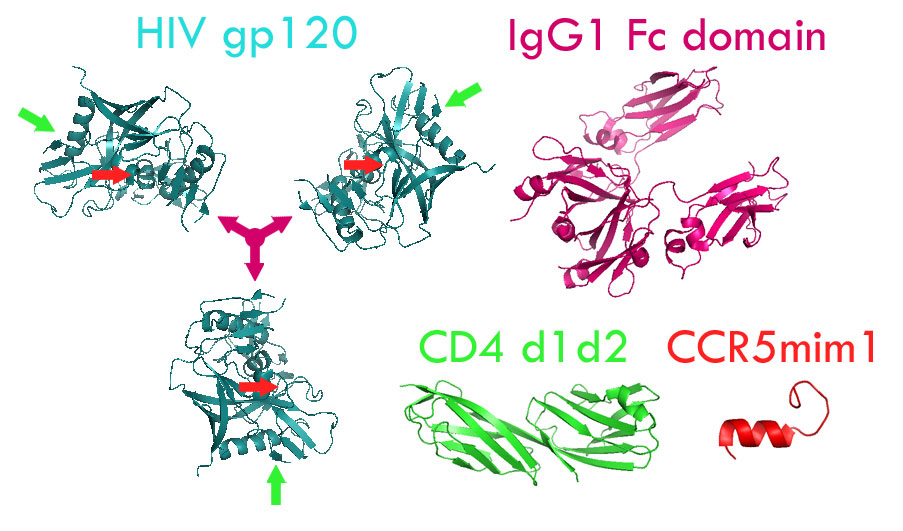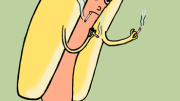What do you learn when you look at an inkblot? Well, some researchers believe that they can help you to reveal the unconscious workings of your mind. The Rorschach Inkblot test is a type of projective test (a test aimed at revealing the unconscious mind), and is just one example of a psychological assessment tool that can be used in conjunction with other tests to examine everything from self-esteem to schizophrenia.
Projective tests as a mode of clinical diagnosis have their theoretical basis in the Freudian idea of psychoanalytic theory, which claims that the unconscious is the driving force behind our behaviour. One popular demonstration of the effects of the unconscious mind on outward behaviour comes from the testing of people suffering from amnesia using direct and indirect memory tests.
With people suffering from amnesia, a direct test might ask a subject to recall a list of words, but their condition, being the inability to remember anything, would make them unable to remember the list. However, with an indirect test, such as a stem-completion task, a person suffering from amnesia would be shown a list of words, and then later asked to complete the words on the list from a fragment. For example, a subject might be asked to add letters to the end of the fragment “mon” to create a new word. If the list of study words contained the word “month” as opposed to “money,” the amnesiacs who did not remember the original word list were more likely to complete the stem with “th”, instead of “ey,” indicating an influence of the unconscious.
The Rorschach Inkblot Test is only one of the psychological assessment tools in the arsenal of clinical psychologists. Other projective tests like Thematic Apperception Test (TAT), and the house-tree-person test (H-T-P) are also popular in the diagnosis of patients.
In the H-T-P test, individuals draw a house, a tree and a person, and specific aspects of the drawing can be used to assess levels of hostility and aggression in the test taker, among other things. In the analysis of the drawing of the person, the presence of scars, teeth, massive shoulders (in males) and the absence of arms are all thought to be highly correlated with hostility and aggression.
When conducting a Rorschach or TAT test, subjects are shown an ambiguous image and asked to describe what they see. These tests work on the assumption that the unconscious will steer their interpretation of the image.
One humorous incident with the Rorschach administration is recounted by Joseph Masling, winner of the Bruno Klopfer Distinguished Award from the Society for Personality Assessment. While still in graduate school, Murray Levine, a colleague of Masling, was administering the Rorschach test to a keen patient. However, every response to a series of Rorschach inkblots, regardless of whether the response was offered immediately or after considerable effort was, “This looks like a pelvic girdle.” After the test was completed, the patient, upon returning to the ward and being asked by the ward psychologist how the test went, responded, “Whew, that was the toughest pelvic girdle test I ever took.”
What interpretation should a clinician make when a patient sees every inkblot as a pelvic girdle? Well, coming from a Freudian background, the patient might be seen as having a fixation with the genitals.
The problem with projective tests is that, because the interpretation of the results is subjective, there is a potential for misdiagnosis. Furthermore, since the tests rely on the unconscious, the subject’s physical surroundings can contribute to their answers. This tendency has been examined as far back as the 1960s by psychological researchers. Two of the many variables which they found influence participant’s responses include the physical appearance of the examiner and the pictures on the wall of the testing room.
Other studies have looked specifically at the percentage of misdiagnoses with the Rorschach test, with many studies producing above 50 per cent misdiagnosis rates. In one study, where well-validated measures for emotional health like the Conner Parent Rating Scale (CPRS) were used in conjunction with the Rorschach test, 60 per cent of individuals who were deemed emotionally healthy according to the CPRS had pathological scores on the Schizophrenia Index indicated by their Rorschach test results. Studies producing similar results are not rare and other researchers have reported upwards of 75 per cent of normal individuals as being psychiatrically disturbed according to Rorschach tests.
Projective tests contrast with less ambiguous and more rigid measures of psychological assessment commonly known as objective tests. Objective tests rely on a subject self-reporting and then having their answers scored by a standardized procedure, as opposed to being directly analyzed, as in projective tests. An example of this kind of tool is the Myers-Briggs Type Indicator, which determines if you’re an ESTJ (Extraversion, Sensing, Thinking, Judgment), an INFP (Introversion, Intuition, Feeling, Perception) or some mixture of those acronyms. Self-report measures are not without their problems, and a fundamental limitation is that their intent is often easy to discern and, thus, participants can fake their responses. This is one of the reasons why projective tests are often used in conjunction with objective tests in an effort to cross-validate the assessment, because with projective tests, self-censorship is more difficult.
Although this article focused on the negative aspects and questioned the validity of psychological assessment tools like the Rorschach, there are a lot of studies published which demonstrate their worth as a diagnostic tool for clinicians. While the controversy rages on, it’s important to ground the significance of these tests in their real world applications; both clinical and legal decisions including mental health determinations and custody battles hinge sometimes on how well a person is drawn, or whether an inkblot is seen as a butterfly or a penis.



